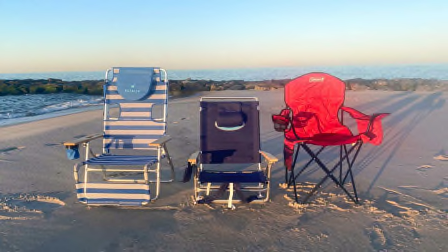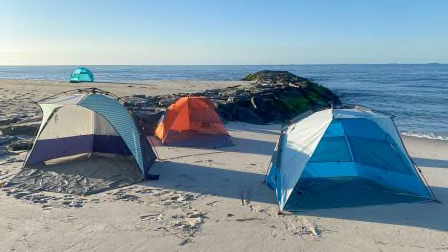Best Beach Umbrellas of 2025
We evaluated popular beach umbrellas from Costco, Tommy Bahama, Walmart, and other brands. We loved one model a lot, and one flew into the ocean—twice!
When you shop through retailer links on our site, we may earn affiliate commissions. 100% of the fees we collect are used to support our nonprofit mission. Learn more.

All beach umbrellas look the same—until you set them up on a windy day and one flies into the Atlantic Ocean before you can kick off your flip-flops (true story).
After evaluating five popular beach umbrellas, our biggest takeaway is that the subtle design differences among the umbrellas matter a lot. Sometimes the eye-catching choice or the lightest, most portable umbrella falls flat—literally—the second the wind blows.
- Best Beach Umbrellas
- More About Beach Umbrellas: UPF Protection Safety Concerns
- How We Evaluated the Beach Umbrellas




















